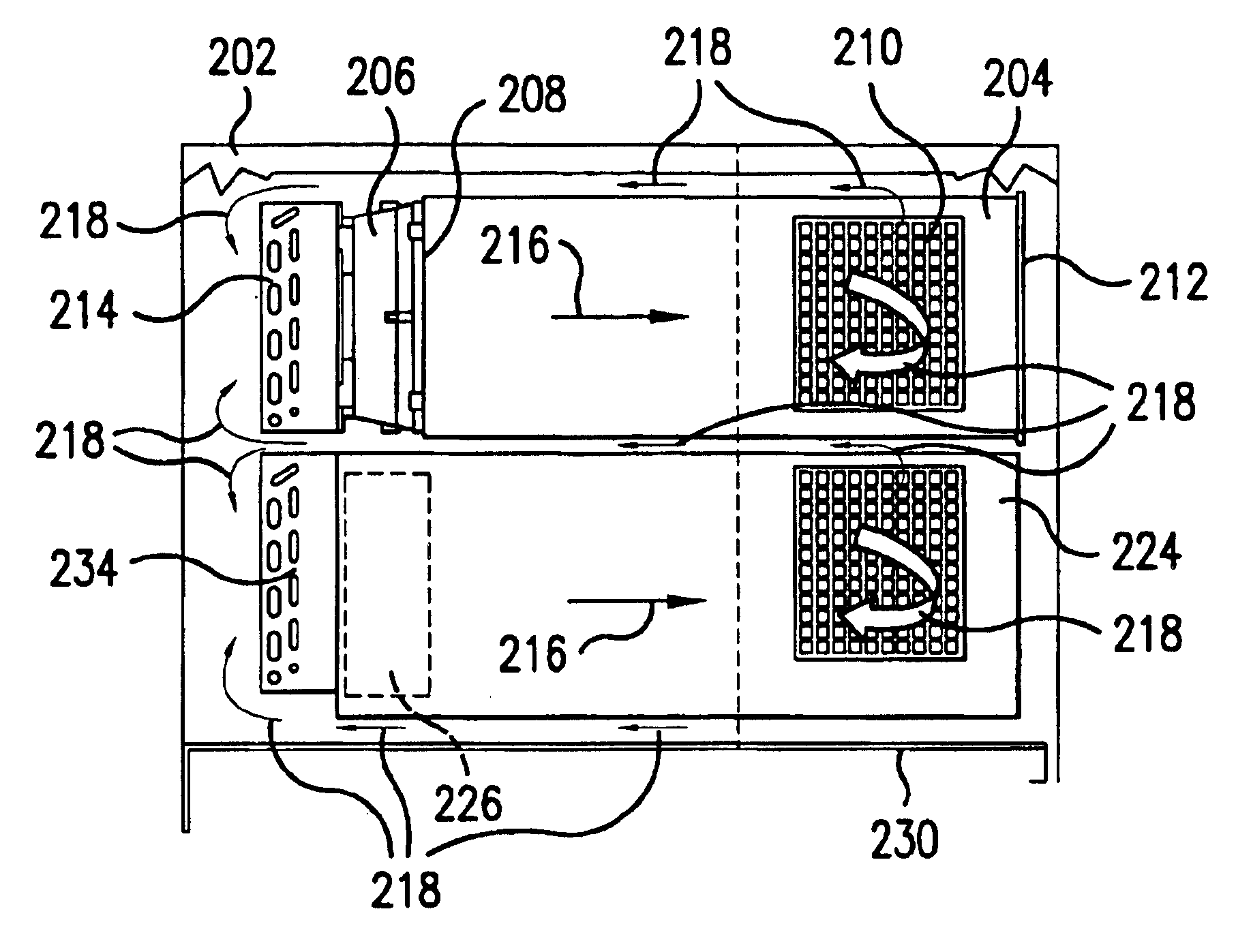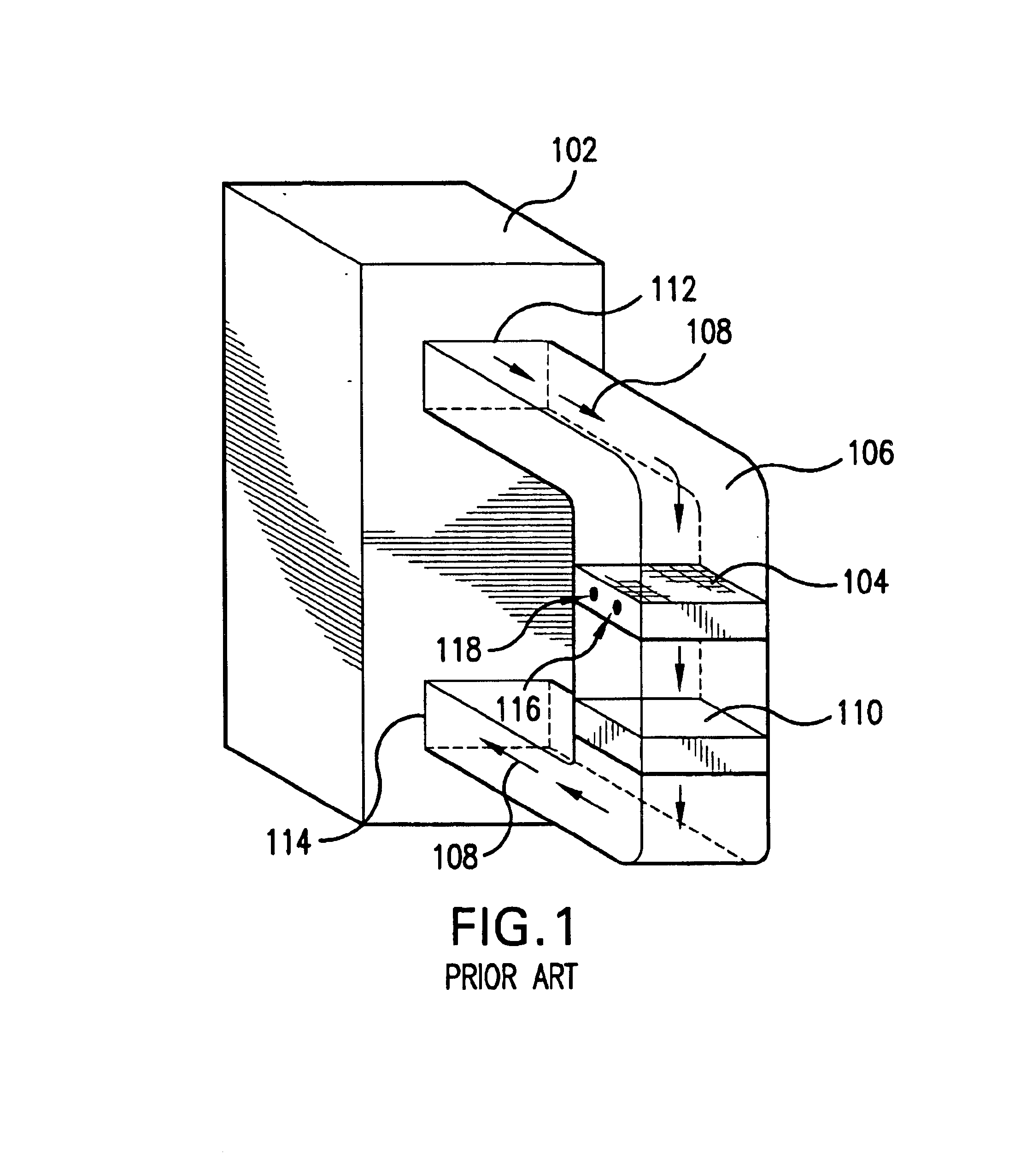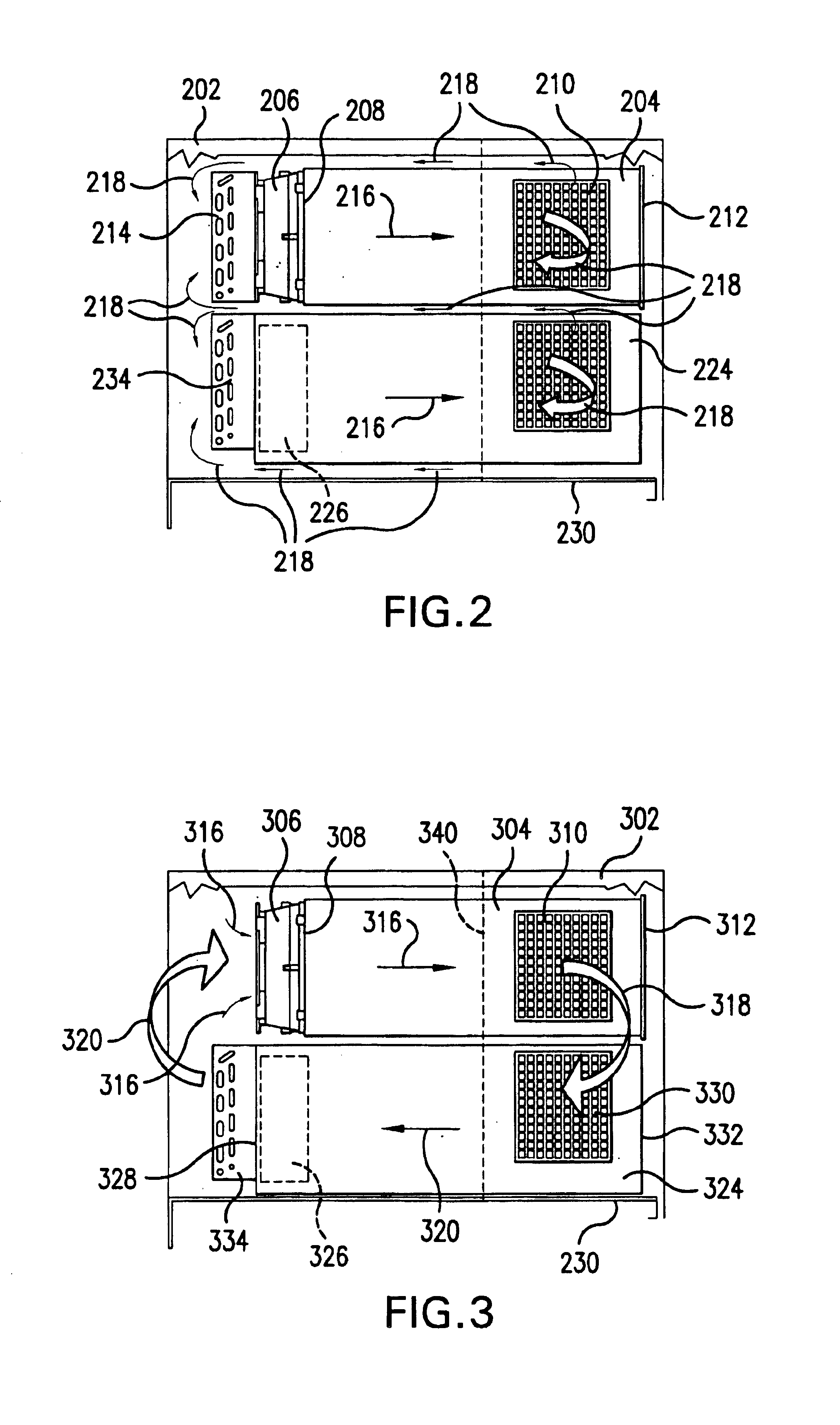Compact ductless cooling with heat exchangers
a technology of heat exchangers and ductless cooling, which is applied in the direction of lighting and heating apparatus, active medium materials, semiconductor/solid-state device details, etc., can solve the problems of inability to exhaust heated air into the facility, insufficient heat exchangers for heating components, waste heat generation of lasers and other electronic equipment during operation, etc., to achieve convenient access to components, save valuable floor space and costs, and avoid complicated ducting
- Summary
- Abstract
- Description
- Claims
- Application Information
AI Technical Summary
Benefits of technology
Problems solved by technology
Method used
Image
Examples
Embodiment Construction
The following is a detailed description of illustrative embodiments of the present invention. As these embodiments of the present invention are described with reference to the aforementioned drawings, various modifications or adaptations of the methods and or specific structures described may become apparent to those skilled in the art. All such modifications, adaptations, or variations that rely upon the teachings of the present invention, and through which these teachings have advanced the art, are considered to be within the spirit and scope of the present invention. Hence, these descriptions and drawings are not to be considered in a limiting sense as it is understood that the present invention is in no way limited to the embodiments illustrated.
FIG. 2 is a schematic view of an electronic enclosure 202 internally containing at least one electronic housing 204. Housing 204 contains internal heat-generating components (not shown). Typically, at least one conventional blower 206 is...
PUM
 Login to View More
Login to View More Abstract
Description
Claims
Application Information
 Login to View More
Login to View More - R&D
- Intellectual Property
- Life Sciences
- Materials
- Tech Scout
- Unparalleled Data Quality
- Higher Quality Content
- 60% Fewer Hallucinations
Browse by: Latest US Patents, China's latest patents, Technical Efficacy Thesaurus, Application Domain, Technology Topic, Popular Technical Reports.
© 2025 PatSnap. All rights reserved.Legal|Privacy policy|Modern Slavery Act Transparency Statement|Sitemap|About US| Contact US: help@patsnap.com



